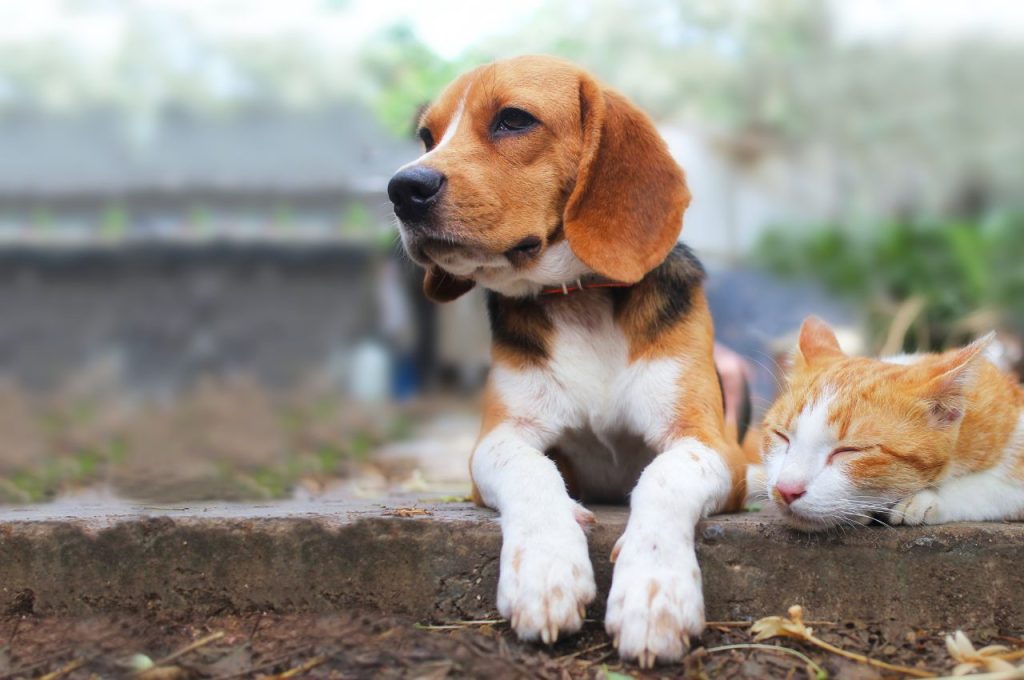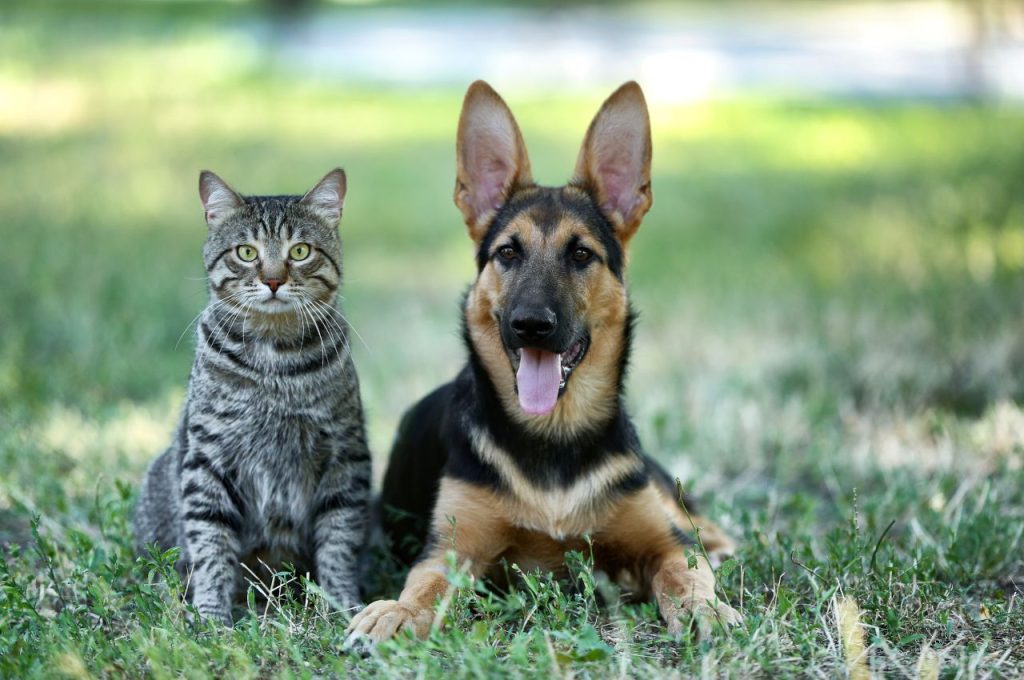Do you have a furry friend at home who just can’t seem to get along with your new addition? The age-old conundrum of getting a cat and a dog to coexist peacefully is a challenge faced by many pet owners. It can be heartbreaking to see your pets constantly in conflict or feeling uneasy around each other. But fear not, for there are proven strategies and techniques that can help bridge the gap and foster a harmonious relationship between your feline and canine companions.
In this guide, we will explore the art of getting a cat to like a dog, unraveling the mysteries behind their instincts and behaviors. From understanding their personalities to implementing gradual introductions, we will delve into the step-by-step process of building a bond between your pets.
Whether you are a seasoned pet owner or a newbie in the world of multi-species households, this comprehensive guide will equip you with the knowledge and skills to create a loving and amicable environment for your furry friends. So, let’s embark on this journey together and pave the way for a positive and peaceful coexistence!
Tips for Getting Your Cat to Like Your Dog
Having a harmonious relationship between your cat and dog can make your home a much happier place. Introducing a new dog to your resident cat can be a challenging task, as cats are known for their independent nature and can be quite wary of unfamiliar animals. However, with patience, proper introductions, and some training, you can help your cat and dog develop a positive relationship. In this article, we will provide you with a step-by-step guide on how to get a cat to like a dog.

Step 1: Create Separate Safe Spaces
Before bringing your new dog into your home, it is essential to create separate safe spaces for both your cat and dog. Cats need a place where they can retreat to and feel secure, away from the dog’s presence. Provide your cat with a designated area that is inaccessible to the dog, such as a separate room or a high perch. Make sure this space has all the necessary amenities, including food, water, litter box, and toys.
Similarly, set up a separate safe space for your dog, preferably in a different part of the house. This will allow your cat to explore the rest of the house without feeling threatened. Providing separate safe spaces will help alleviate stress and ensure that both your cat and dog have their own areas to relax and feel comfortable.
Step 2: Gradual Introductions
When it’s time to introduce your cat and dog, it’s crucial to do it gradually and in a controlled manner. Start by allowing them to become familiar with each other’s scent. Swap their bedding or use a cloth to rub each animal, then place it in the other animal’s space. This will help them get used to each other’s scent without direct interaction.
Next, you can introduce them through a barrier, such as a baby gate or a door cracked open. This allows them to see and smell each other without having direct contact. Gradually increase the duration of these sessions while monitoring their behavior. If any signs of aggression or stress occur, separate them and give them more time to adjust before trying again.
Step 3: Positive Reinforcement and Training
Positive reinforcement is key to helping your cat and dog associate each other’s presence with pleasant experiences. Use treats, praise, and rewards to encourage calm and positive behavior during their interactions. For example, reward them for sitting calmly near each other or for showing curiosity without aggression.

It is also essential to provide proper training for your dog to ensure they understand and respect your cat’s boundaries. Teach your dog basic obedience commands, such as “sit,” “stay,” and “leave it.” This will help establish control and prevent any potential harm to your cat. Consistency and patience are essential during the training process.
Step 4: Supervised Interactions
Once your cat and dog have shown positive progress during the gradual introductions and training, you can start allowing them to have supervised interactions. Keep your dog on a leash during these initial interactions to have better control over their behavior. Allow them to sniff and investigate each other while closely observing their reactions. If any signs of aggression or stress arise, separate them and try again later.
Always prioritize the safety and well-being of both your cat and dog. If you notice any continuous signs of aggression or extreme stress, consider seeking guidance from a professional animal behaviorist who can provide further assistance in managing the introduction process.
Step 5: Patience and Time
Remember, building a positive relationship between your cat and dog takes time and patience. Every animal is unique, and the timeline for them to develop a bond may vary. Be understanding and give them the space they need to adjust to each other’s presence. With consistent efforts and a calm environment, your cat and dog can learn to coexist peacefully and even become friends.

Frequently Asked Questions
In this section, we will address some common questions and concerns about how to get a cat to like a dog.
Question 1: Can cats and dogs really get along?
Answer: Yes, cats and dogs can get along and even become great friends. However, it’s important to introduce them properly and give them time to adjust to each other’s presence.
When introducing a dog to a cat, start by keeping them separate and allowing them to get used to each other’s scent. Gradually introduce them in controlled settings, such as with a gate or a leash, and observe their behavior. Provide positive reinforcement for calm and friendly interactions, and never force them to be together if they show signs of fear or aggression.
Question 2: How can I help my cat and dog feel comfortable around each other?
Answer: Creating a positive and comfortable environment is key to helping your cat and dog feel at ease with each other. Provide separate spaces for each pet where they can retreat to if they feel overwhelmed or need some alone time.
Give each pet their own food, water, and litter box so they don’t feel like they have to compete for resources. Additionally, make sure they both receive plenty of individual attention and playtime to prevent any feelings of jealousy or neglect.
Question 3: What can I do if my cat and dog don’t seem to be getting along?
Answer: If your cat and dog are not getting along, it’s important to assess the situation and address any underlying issues. Look for signs of stress, fear, or aggression in either pet, and consider seeking the help of a professional animal behaviorist or trainer.
They can provide guidance on how to modify behavior, create a structured routine, and implement positive reinforcement techniques. It may take time and patience, but with the right approach, many cats and dogs can eventually learn to coexist peacefully.
Question 4: Should I leave my cat and dog unsupervised together?
Answer: It’s generally not recommended to leave a cat and dog unsupervised together until you are confident in their ability to get along. Even if they seem friendly, accidents can happen, and it’s important to ensure the safety of both pets.
Gradually increase their unsupervised time together as they demonstrate positive interactions and good behavior. Always provide them with separate spaces and resources to prevent any potential conflicts.
Question 5: Can I train my cat and dog to like each other?
Answer: While you can’t force a cat and dog to like each other, you can help foster a positive relationship between them through training and socialization. Use positive reinforcement techniques to reward good behavior and encourage friendly interactions.
Additionally, providing mental stimulation through interactive toys and activities can help divert any potential negative behaviors. Remember, it’s important to be patient and allow each pet to adjust to the new dynamic in their own time.
Conclusion
Bridging the gap between cats and dogs is a delicate process that requires patience, understanding, and a commitment to creating a harmonious environment for both pets. By following the steps outlined in this guide, you can gradually help your cat and dog form a positive relationship based on trust, respect, and companionship. Remember, every cat and dog is unique, so it’s important to adapt these strategies to suit their individual personalities and needs. Be prepared for setbacks along the way, as building a bond between two different species takes time and effort.
However, with consistency, positive reinforcement, and a lot of love, you can create a peaceful and loving home where your cat and dog coexist happily. So, don’t give up – with your dedication and the tips provided in this guide, you can successfully get your cat to like your dog and foster a lifelong friendship between them.
